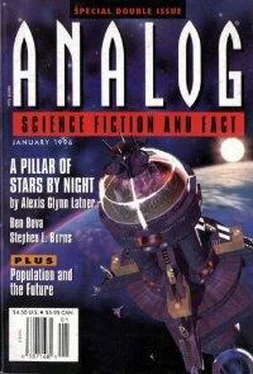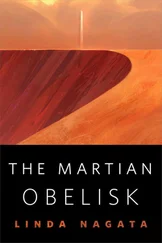G. Nordley - Martian Valkyrie
Здесь есть возможность читать онлайн «G. Nordley - Martian Valkyrie» весь текст электронной книги совершенно бесплатно (целиком полную версию без сокращений). В некоторых случаях можно слушать аудио, скачать через торрент в формате fb2 и присутствует краткое содержание. Год выпуска: 1996, Издательство: Dell Magazines, Жанр: Космическая фантастика, на английском языке. Описание произведения, (предисловие) а так же отзывы посетителей доступны на портале библиотеки ЛибКат.
- Название:Martian Valkyrie
- Автор:
- Издательство:Dell Magazines
- Жанр:
- Год:1996
- ISBN:нет данных
- Рейтинг книги:5 / 5. Голосов: 1
-
Избранное:Добавить в избранное
- Отзывы:
-
Ваша оценка:
- 100
- 1
- 2
- 3
- 4
- 5
Martian Valkyrie: краткое содержание, описание и аннотация
Предлагаем к чтению аннотацию, описание, краткое содержание или предисловие (зависит от того, что написал сам автор книги «Martian Valkyrie»). Если вы не нашли необходимую информацию о книге — напишите в комментариях, мы постараемся отыскать её.
Martian Valkyrie — читать онлайн бесплатно полную книгу (весь текст) целиком
Ниже представлен текст книги, разбитый по страницам. Система сохранения места последней прочитанной страницы, позволяет с удобством читать онлайн бесплатно книгу «Martian Valkyrie», без необходимости каждый раз заново искать на чём Вы остановились. Поставьте закладку, и сможете в любой момент перейти на страницу, на которой закончили чтение.
Интервал:
Закладка:
The image dissolved to a UN link operator who told me that Halvorsen had hung up, not waiting for my sign-off. In retrospect, I may have been too peremptory myself, but still, the insult stung.
I called a staff meeting to decide how to deal with the Norwegian expedition. It would take us four days to rendezvous with our Deimos supply depot, refuel, deploy our landers, and be ready to mount any kind of an operation, we reasoned. The Norwegians would most likely have trouble during aerobraking, so it would be best if we were in place before they got there.
Nobody wanted to call it a race, but we examined our trajectory margins to see if we could get to Mars earlier. But the trajectory people told us the time to have done that was in low Earth orbit. Now, it would eat into our reaction mass budget more than mission rules would allow. The Norwegians, it seemed, would get to Mars orbit before us. Dead or alive, but first.
Not if I had my way. We had plenty of fuel margin—there ought to be some way of stealing a little of that to shave some days off our trajectory. There was a planned midcourse burn only forty hours away. If it was just a little bigger… I knew my way around mission planning bureaucracies—I called the man in charge of trajectory analysis and asked him if he could run some contingency cases that had looked good to us. Strictly hypothetical? I grinned at the planner and he grinned back. He wanted to win, too.
It looked good.
Two days later, I was smiling and it was Halvorsen who was angry.
“We plan so our ships will be out of your way. Now we all get there at once bam-bam and will all be so busy that no one will have time to help anyone! And you use up your fuel margin! Over!”
“You are mistaken in your exaggerations, Dr. Halvorsen,” I answered, calmly. Dr. Obote, our ground orbit analyst, also exaggerated when he’d called to upbraid me for my non-nomi-nal burn. But after a few Swahili expletives, he acquiesced to the fait accompli and participated in the “discretionary-modification-well-within-mission-parameters” official cover.
“My fuel margin,” I continued to Halvorsen, “is not used up and we will arrive in Mars orbit well ahead of you.
For which you should be profoundly thankful if we have to rescue your people. Now that possibility is an unplanned complexity and need for coordination. Over”
I relaxed and contemplated our trajectory display with a smile. The arrival time difference was up to five hours, now—in our favor.
Finally, Halvorsen frowned and opened his mouth. “We have sufficient redundancies and do not require or plan on your help. You have enough problems just executing all you have planned. I ask you now to forget we are there and concentrate on your task. Over.”
I prayed for equanimity in the face of such arrogance, and my prayer was answered—-with the Lord s help, I did not lose my temper, but instead answered in measured tones. “I’m verv sorry you feel that way. But we can’t let past disagreements stand in the way. When we … I mean, if it may be necessary for me to rescue your people, I will need your cooperation. Over.”
I waited a minute to hear him snort and shout, “Halvorsen out!” Touchy hombre, Halvorsen.
We watched the Norwegians on our telescopes as it approached time for their course correction. Our ships were getting closer every day, on paths that would arrive at Mars separated only by hours, and within the last week had gotten close enough so that our twenty-meter baseline synthetic-aperture optics could see the details of their ship’s construction. Each Norwegian ship appeared to be a bundle of four squat cylinders sitting on their ends in a saucer-shaped heat shield. Range and apparent angle told me the cylinders were each about four meters tall and two meters wide. The cylinders were capped by transparent domes, through which we could occasionally make out one or both of the crew members. There were four holes in the heat shield, one under each cylinder, apparently for the rocket exhaust.
The ships were tied “nose”-to-“nose” by a tether almost half a kilometer long, rotating every fifty seconds; at high magnification, it was like watching the second hand of a clock move. We expected to see that clock stop and watch the Norwegians dock, untether, undock, do their burns, rendezvous, redock, re-tether and, in what should be one of the dicier maneuvers in astronautics, reestablish their tethered rotation. I looked at the clock—they were seriously behind schedule if they were going to meet their window. Had something gone wrong already?
Suddenly, one of the ships spouted fire for a couple of seconds. The acceleration was apparently much less than their centrifugal weight, because there was no sign of slack or vibration in the cable. Twenty-five seconds later the other ship also fired when its engines were pointed in the same direction as those of the first ship when it had fired. This went on for five cycles. Nothing wobbled, nothing broke. Mustaffa, as dumbfounded as I was, looked from the bridge video to me, and back again.
I shook my head. I had no idea of how complex their internal procedures and checks were, but the operation viewed from outside was simple to the point of elegance—yet our engineers had justified management s position of not trying spin gravity by citing the complexity and uncertainty of doing such maneuvers. It was something that had never been done before with a manned spacecraft.
Well, now it had—and that tight spot in my stomach that had materialized as soon as I heard of Halvorsen’s mission grew a little tighter. We were up against someone who did not live by the rules of managers, politicians, and tame engineers. He did not respect the zonas intangibles. He and his people could do things we could not. It wasn’t fair. I thought about Ingrid Karinsdatter. It was most definitely not fair.
Midway to Mars, I was forced to hold a disciplinary hearing. Planetologist Kadir Ibn Muhunnad caught Sajag Kedar, our biotechnician, examining the Norwegian ships at maximum magnification, something that would have attracted no adverse notice except for the data he saved.
I must explain. The Norwegian ships were still somewhat sunward of us and the Sun was in the plane of rotation of the tethered ships, plunging their domes into shadow for about ten seconds each revolution. During this time, glare vanished and one could see inside. The Norwegians seemed to use the dome for relaxation—as a Sun deck mostly—there were plants and acceleration couches, but almost no visible equipment.
Whether Dr. Karinsdatter was aware of our surveillance, or whether she would have dressed more modestly even if she had been aware of it, is a matter of conjecture. Our telescopes were larger than those the Norwegians carried and I doubted that either of them had thought that we could observe them; we must have been just four very bright stars from their point of view But Halvorsen, who sent them to plague us? He might have thought of it. Oh, he might have.
In one of Sajag’s five-second clips, Dr. Karinsdatter, alone on her couch, chanced to look through her bubble, across the megameter of space between us, through the optics and the electronics, from the view plate, and right into my eyes. It was obvious from what she was doing that she had no idea that anyone was looking back at her at such high resolution. Still, I felt taunted—and much more.
“In my country, she could be shot for this,” Kadir told me—as he viewed the video evidence just as compulsively as everyone else. “It is her responsibility not to be seen in such a way.”
Sajag was removed from the telescope schedule, but I am sure he was just the one who was careless enough to be caught. We all had access, and we all had times when we were the only ones awake on the ship. Several of us had valid reasons to be studying the Norwegian ships. We edited the logs after the hearing; common sense decrees that not everything be saved for posterity. Not only that, but we did not want to give Halvorsen the satisfaction of knowing what he’d done to us.
Читать дальшеИнтервал:
Закладка:
Похожие книги на «Martian Valkyrie»
Представляем Вашему вниманию похожие книги на «Martian Valkyrie» списком для выбора. Мы отобрали схожую по названию и смыслу литературу в надежде предоставить читателям больше вариантов отыскать новые, интересные, ещё непрочитанные произведения.
Обсуждение, отзывы о книге «Martian Valkyrie» и просто собственные мнения читателей. Оставьте ваши комментарии, напишите, что Вы думаете о произведении, его смысле или главных героях. Укажите что конкретно понравилось, а что нет, и почему Вы так считаете.












